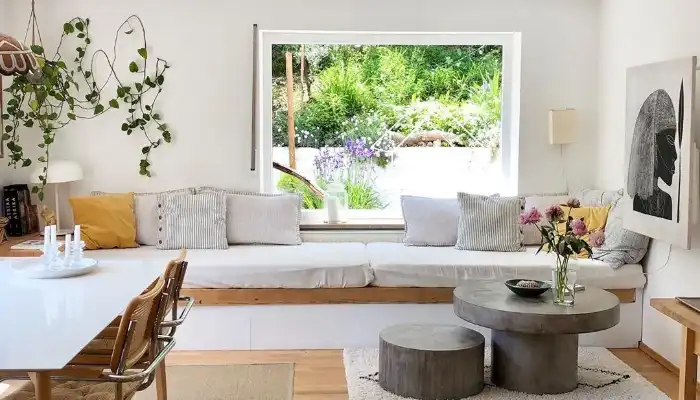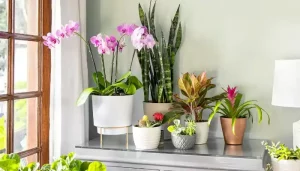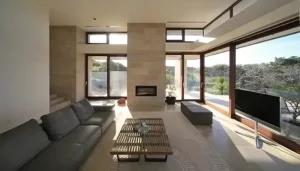Have you ever walked into a room and felt an instant sense of calm and peace? Conversely, have you ever felt inexplicably restless or drained in a particular space? Our homes, unbeknownst to many, hold a powerful influence over our well-being. This is where the ancient practice of Feng Shui comes in.

Feng Shui: A Journey Through Time
Feng Shui (pronounced fung shway) translates literally to “wind” (Feng) and “water” (Shui). It’s a Chinese philosophy that originated over 3,000 years ago. Focused on harmonizing energy flow (known as chi) within a space, it aims to create environments that promote wellness, prosperity, and good fortune.
Debunking Feng Shui Myths
Feng Shui is often shrouded in mystery and misconceptions. Here are some common myths debunked:
- Myth: Feng Shui dictates strict furniture placement rules.
- Reality: While furniture placement is important, Feng Shui is more about creating a balanced and functional flow within a space.
- Myth: Feng Shui requires expensive cures and talismans.
- Reality: The most effective Feng Shui practices involve simple adjustments like decluttering and maximizing natural light.
- Myth: Feng Shui is a religion.
- Reality: Feng Shui is a non-religious practice based on observational principles and creating harmony with the environment.
The Heart of Feng Shui: Balance and Harmony
Feng Shui rests on a foundation of several key principles:
- The Five Elements: Wood, fire, earth, metal, and water are believed to represent different energies. A balanced presence of these elements within a space is considered ideal.
- Yin and Yang: This concept represents the balance between opposing forces, like light and dark, or activity and rest. A harmonious space incorporates both.
- The Bagua Map: This octagonal map represents different aspects of life, such as wealth, health, and relationships. It’s used to map out energy zones within a home.
Applying Feng Shui for a Balanced Home
Now that we’ve explored the core principles, let’s see how Feng Shui can be applied in your home design:
- The Entryway: Consider the entryway as the “mouth” of your home. Keep it clutter-free, well-lit, and welcoming. A beautiful rug or a bowl filled with fresh fruits can enhance this vital area.
- The Living Room: This is a space for gathering and relaxation. Arrange furniture to create conversation areas, avoid sharp corners, and incorporate calming elements like nature paintings or soothing water features.
- The Bedroom: Dedicated to sleep and rejuvenation, the bedroom should promote tranquility. Opt for a comfortable bed positioned away from the door, and minimize electronics in this space.
- The Kitchen: The kitchen represents nourishment and abundance. Keep it clean and organized, ensure proper lighting over work areas, and consider placing a bowl of fresh fruit on the counter to symbolize prosperity.
The Unexpected Benefits of Feng Shui
While creating a beautiful and stylish home is important, Feng Shui offers a multitude of benefits that extend beyond aesthetics:
- Enhanced Energy Flow: Proper Feng Shui promotes a smooth flow of positive energy (chi) throughout the home. This can lead to a more vibrant and uplifting living environment.
- Improved Sleep Quality: A cluttered, unbalanced space can disrupt sleep. Feng Shui principles that emphasize decluttering, calming colors, and proper furniture placement can create a more restful sleep environment.
- Stress Reduction: Our homes should be sanctuaries from daily stressors. Feng Shui’s focus on creating a harmonious and organized space can contribute to a calmer and more peaceful atmosphere.
- Enhanced Creativity and Productivity: A well-organized and inspiring home environment can stimulate creativity and promote focus. Feng Shui techniques like incorporating stimulating colors in work areas or placing plants associated with growth can enhance these aspects.
- Promotion of Health and Well-being: The environment we live in plays a significant role in our overall health. Feng Shui practices like ensuring proper ventilation, maximizing natural light, and creating a clean and clutter-free space all contribute to a healthier home environment.
Remember, Feng Shui is not a rigid set of rules, but rather a holistic approach to creating a space that reflects your needs and promotes well-being. By incorporating some of these principles, you can transform your home into a haven of harmony, peace, and positive energy.
Bringing Balance with Feng Shui: Practical Tips
Ready to embrace the principles of Feng Shui in your home? Here are some practical steps to get you started:
- Declutter and Cleanse: Stagnant energy is believed to accumulate in cluttered spaces. Begin by decluttering your home, removing unused items, and letting in fresh air and sunlight.
- Embrace the Bagua Map: The Bagua map is a tool used in Feng Shui to represent different areas of life, such as love, wealth, and health. Overlay the Bagua map on your home’s floor plan to identify which areas of your life might need a boost.
- Commanding Position: The “commanding position” refers to the ideal placement for furniture, particularly in bedrooms and living rooms. Ideally, you should be able to see the entrance of the room while seated, fostering a sense of security and control.
- The Power of Five Elements: Feng Shui emphasizes the balance of five elements – wood, fire, earth, metal, and water. You can incorporate these elements through color palettes, materials, and natural objects.
- Harness the Power of Plants: Living plants are believed to promote positive energy flow and enhance air quality. Choose healthy plants that thrive in the light conditions of each room.
Table 2: Incorporating the Five Elements of Feng Shui
| Element | Associated Areas of Life | Colors | Materials |
| Wood | Growth, New Beginnings, Creativity | Greens, Browns | Wood furniture, houseplants |
| Fire | Passion, Energy, Recognition | Reds, Oranges, Yellows | Candles, fireplaces |
| Earth | Stability, Security, Grounding | Browns, Yellows, Beiges | Stone floors, ceramic pots |
| Metal | Focus, Discipline, Productivity | Whites, Grays, Silvers | Metal sculptures, metallic accents |
| Water | Peace, Flow, Communication | Blues, Blacks | Water features, fountains |
Conclusion
Feng Shui is not a one-size-fits-all approach. Experiment with different techniques, observe how they make you feel, and personalize your space to reflect your unique energy.
The ultimate goal of Feng Shui is to create a home environment that fosters a sense of peace, harmony, and well-being. So, embrace the journey, explore the possibilities, and discover how Feng Shui can enhance your home and your life.


